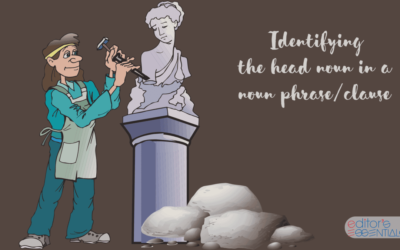OK, I confess. I don’t like the name “modern comments” when MS Word introduced this new feature. Neither did I like modern comments the feature – Microsoft told me that the modern comments feature aligns “the commenting experience across Word platforms and other Office apps, especially Word, Excel, and PowerPoint”. I did not like it because I use these three apps in the same order, but with Excel and PowerPoint being used very little. In fact, I don’t even remember the last time I added a comment in Excel or PowerPoint. I have developed a subconscious routine for adding comments in Word, however:
- press ctrl + alt + p (switch to the print layout)
- press ctrl + alt + m (insert comment)
- type the comment (well, type the comment)
- press ctrl + alt + n (switch back to the normal view)
Steps (i), (ii) and (iv) are so subconscious for me that I correctly hit the combination ctrl + alt + p when I am about to enter a comment, but typed press ctrl + shift + p when I wrote the previous sentence, thought for a moment, realized the mistake and changed it.
You might be wondering why I switch to the print preview mode. If you recognized, I prefer the normal/draft layout for editing, as most editors do. It increases the reading space and enables wrap text so that I can increase text size without worrying about the need to use the horizontal scroll bar to read the text on the right extreme. But when I press ctrl + alt + m to insert a comment in the normal/draft layout, the comment box will open in the Revisions pane on the left, which I don’t like for various reasons. (To give you one reason, the comments are not easy to visually navigate when they are “hidden” among insertions and deletions – more annoying with longer documents with a lot of track changes.)
But Microsoft is forcing this change on me, to use “modern comments”, which I didn’t like. Who likes a change, after all? But I was happy to find that the older version of commenting feature is still available. That’s good. No, not really. This alternative arrangement is only temporary. Sooner than later, modern comments will be the only available choice. I don’t like this change and hated Microsoft for this forced change – I guess it’s time I switch to find an alternative for Microsoft.
But I love Microsoft Word, so much so that I started looking for one simple reason to like modern comments. As I thought more about it, something dawned on me – using ctrl + alt + m in the normal layout doesn’t take me to the Reviewing Pane anymore. It rather takes me to the comment balloon on the right, similar to how it works on the print layout. Which means, I can altogether do away with steps (ii) and (iv)! I don’t have to switch between the normal and print layouts just for the sake of inserting a comment.
What’s more – when I collaborate with my team, by saving the document to the cloud, I can use @mention to address a specific person. So, now I can say @Saravanan, can you check this? and Saravanan will receive an email notification that I have mentioned him in a document! Not just that, I can reassign to another team member by using @mention of the second person in the response field. The second member now gets an email. Collaboration becomes much better.
Modern comments doesn’t seem to be bad, after all. I think I have already started loving this feature. Have you started using modern comments? If so, how much do you like it and what other comments hack do you use?
Further reading:
- You can read more about modern comments from the horse’s mouth here.
- You can read more about using @mentions here.
[The post image was created on Canva.]



0 Comments